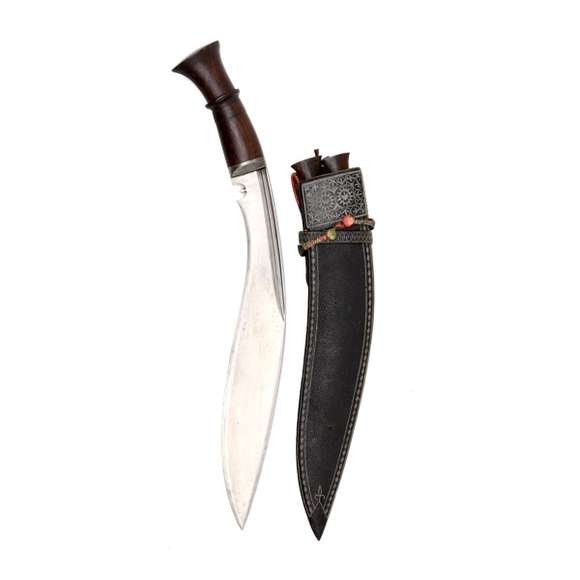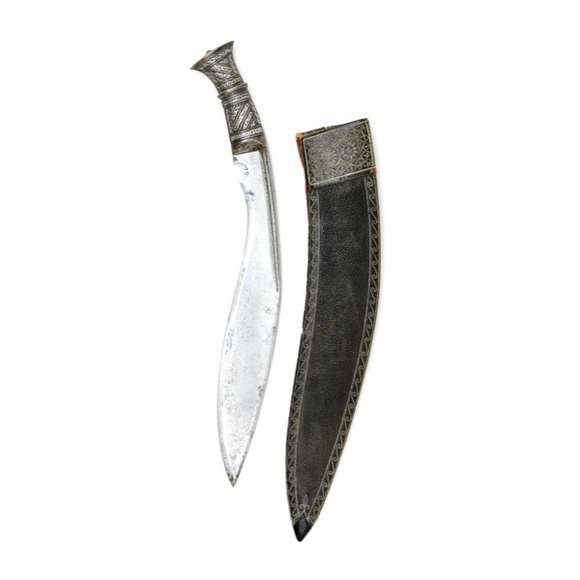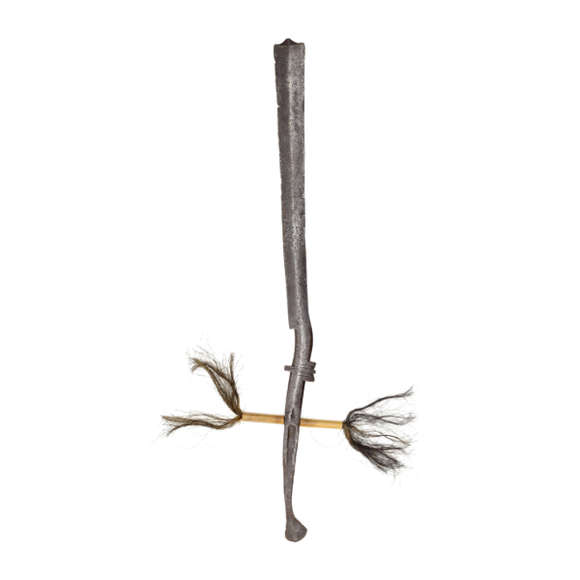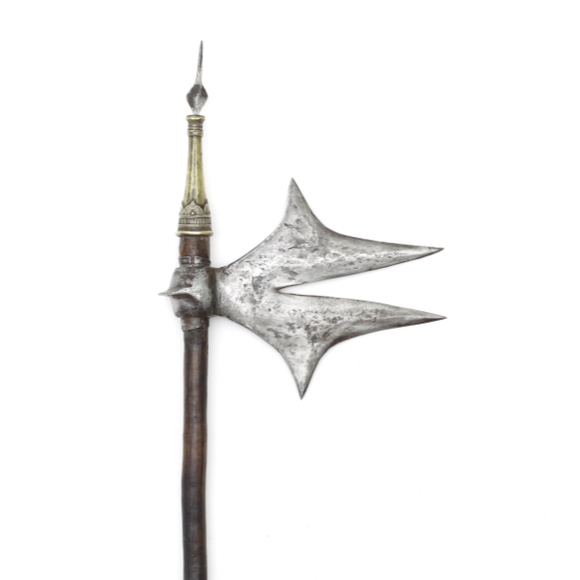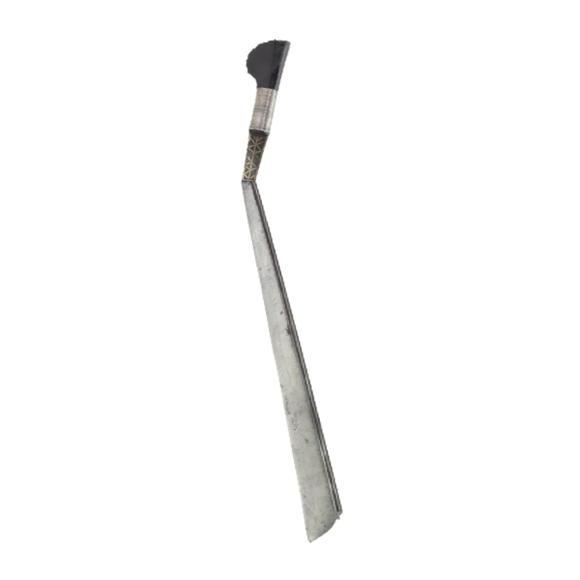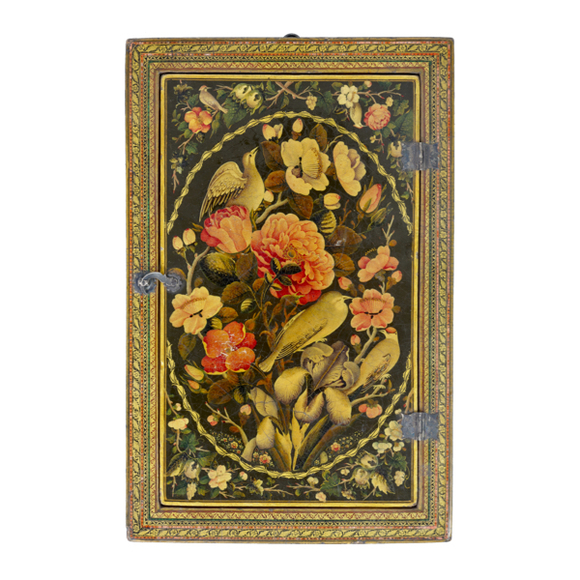An understated, elegant khukuri of substantial proportions with fine layered blade.

42 cm
12.5 cm
893 grams
Hardwood
Fiji
19th century
Robert Hales
Description
A Fijian throwing club, called i ula tavatava or simply ula.
It is carved out of a single piece of wood. The business end is a knob with 10 protruding lobes and a dome on top. The haft is smooth until the grip section, which is carved with geometric patterns for grip.
There is a crack in the knob caused by shrinkage of the wood over time. Also, a sliver of the grip section is missing. Looking at the roundness of that area and its deep patina, it has been gone for a very long time and was likely lost during its working life.

A Fijian man from Viti Levu with his throwing club.
Unkown photographer. Late 19th century.
British Museum Library of Mankind, accession number Oc,B96.11.
A close-up of the man is seen in accession number Oc,B96.12.
This photo is associated with Professor Thomas Henry Huxley (1825-1895), a notable biologist and anthropologist who specialized in comparative anatomy. He served as an assistant surgeon on the HMS Rattlesnake expedition to the Great Barrier Reef and New Guinea between 1846 and 1850. He later became President of the Royal Society from 1883 to 1885. An outspoken agnostic and supporter of Darwin's theory of evolution.
Comparable examples
A very similar club is in the British Museum, accession number 2017,Q.135. It is labeled:
Govt. of Victoria
13 Aug 1891
Another in the same museum, accession number Oc1922,1101.1, was donated to the museum by British novelist and collector Sir Henry Rider Haggard. It was given by Cakobau's son Ratu Timothy to Mr C. Heaton Ellis in 1886 who gave it to Sir Haggard in 1907. Cakobau was the first and only king of Fiji.
According to the museum notes, the club was said to have been of one of the king's executioners, and the notches in the hilt represented the kills. This seems unlikely, considering how many of those notches were cut into the haft. However, such clubs are indeed recorded as having been used for executions:
At a later period, Tanoa sentenced his youngest son to die by the club.
The blow given by the brother who was appointed as his executioner, was not fatal.
The father knowing of his entreaty for mercy, shouted angrily,
" Kill him ! Kill him ! " and the horrible act was completed.
Thomas Williams; Fiji and the Fijians. 1859. Page 15.
Another similar example was collected in Fiji by a Mr Skenner in 1889. It was sold through Sotheby's in the sale titled Pacific Art from the Collection of Harry A. Franklin, New York, 13 May 2019. Lot 6. It sold for 4375 USD.
Provenance
This club originally came from the collection of Robert Hales, who sold it through Sotheby's, after which it circulated among Dutch collectors.













With iron, silver overlaid hilt. Its associated scabbard features fine quillwork.
This peculiar sword was used by the Garo people of Assam for fighting, clearing the jungle, and animal…
Made of pasteboard, finely lacquered with roses and nightengales.

